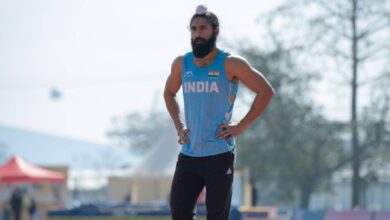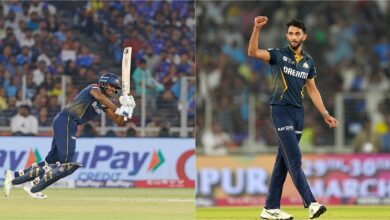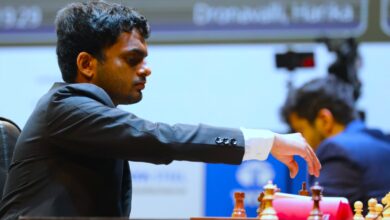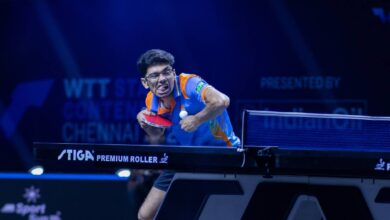Grzegorz Gajewski, the common link between Viswanathan Anand and D Gukesh | Chess News

Last Friday saw Indian chess turn a page as 17-year-old D Gukesh took over as the country’s top-ranked player from Viswanathan Anand in FIDE’s monthly rankings l.It has been 37 years since anyone other than Anand was India No. 1.Grzegorz Gajewski has witnessed India’s chess revolution from a unique vantage point: the Polish Grandmaster was a second — a player whose job it is to come up with ideas and tactics and then test them before big games — for Anand when the Indian took on Magnus Carlsen in Sochi for the 2014 World Championship in a bid to wrest back the title from the Norwegian.
Since the pandemic, Gajewski has been working with some of India’s sharpest minds at Anand’s academy, WACA. For the last few months, he’s also assumed the role of Gukesh’s coach.
Gajewski chuckles as he narrates the time he was forced to do push-ups for a whole week thanks to a pact with Gukesh, in what was one of their first events working together. The story goes that at the Tata Steel Chess Masters in January, Gukesh had frequently courted time trouble, which had made him relinquish even good positions on the board. So, to make him stave off trouble with the clock, Gajewski made an offer to the Indian GM.
For the last few months, Gajewski has also assumed the role of Gukesh’s coach. (Gukesh/Twitter)
“Until then, it had been a difficult event for him. He even lost to Wesley So despite holding an advantage at one stage, only because of time trouble. Time trouble at that stage was a big factor for him. And he was going to face Magnus Carlsen in the next game. I knew he had to do something about the issue,” the Pole recalls.
“But it’s not something you can just fix (in a day)! The message was clear, but how to convey the message to Gukesh was the tricky part. So I came up with a unique solution: I offered to do 10 push-ups for every minute he saved on the clock. I told him he had to have a certain amount of time on the clock (in the game against Carlsen) after move 30 or something, and if he was able to do that, he would do 10 push-ups.”
That offer worked wonders!
“His time management with Carlsen was perfect! It felt like he was literally trying to punish me! He even told me later that at some point during the game, he started counting push-ups I would have to do. He drew the game very comfortably. The rest of the tournament went very well for him. He got rid of the time trouble issues,” says Gajewski, who adds: “The only downside was that I actually had to work out quite a bit. I did about 160 push-ups overall! I was doing them for the next week at least because it was not possible for me to do them in one day.”
Different eras
His stint as Anand’s second was much different. Not only were there fewer push-ups — presumably — it was also the era when chess engines had not completely taken over the job of preparing a player’s strategy. Today, chess engines are like self-driven cars.
“Many years back, we would sit for five hours and analyse lines. We’re like dinosaurs,” Gajewski jokes before adding: “So many positions that we used to think were dry, equal, uninteresting… the engines came up with lots of interesting ideas for them. So our generation basically had to re-learn what we had learnt in our youth. That was the tricky part. One of the reasons behind Vishy staying on the top for so many years was that he managed to re-learn.
“When I was working with Vishy, it was the era of the early chess engines. You had to work with engines for many hours and had to lead them hand… you had to have your own ideas, but then used the engine to check them. Today, you just hit the spacebar on the computer and you get all the answers immediately. There is no point arguing with engines because they’re basically always correct,” he says, before adding proudly that he has become better at ‘arguing with engines’ over the years.
“With these two Indian kids — Pragg and Gukesh — you have to beat them twice,” Gajeswski tells The Indian Express. (Gukesh/Twitter)
Preparing Gen-Now
In his autobiography Mind Master, Anand lauds Gajewski’s “ability to see things” that he himself had missed. It’s the reason Anand enled his services for WACA, where his job is to help prodigies like Gukesh, R Praggnanandhaa, Arjun Erigaisi and others with opening preparation.
“At WACA, my job is to show those kids some interesting material regarding openings; maybe, some nice opening ideas that haven’t been played yet. I also showed them how deep they should go with opening preparations, and how serious they should be about it,” he says.
Most Read
1
India vs Pakan Highlights, Asia Cup 2023: Match called off in Pallekele after rain plays spoilsport
2
Breaking: India’s World Cup team finalised, Sanju Samson misses out
See More
“With these two Indian kids — Pragg and Gukesh — you have to beat them twice. Look at the game between Pragg and Fabiano Caruana (semi-final of the FIDE World Cup). Fabiano was able to outplay him, but he was never able to out-calculate Pragg. The problem any player will face playing these two kids especially is that you have to beat them twice. First, you have to outplay them chess-wise. Then you still have to out-calculate and out-trick them. These two start setting up traps, start muddying the waters, keep asking questions. Fabiano knew he had a big advantage against Pragg in a few games. But he still wasn’t able to prove it,” points out Gajewski.
Having worked with Anand and now with the cream of India’s next generation of chess wizards, the inevitable question is how the teens measure up to the lofty standards set Anand.
“It’s not easy to compare (the current Indian prodigies with Anand). Vishy is unique, I don’t think he can ever be replaced anyone. But at least some of them — if they work hard enough and continue to develop as smoothly as they’re currently developing — have the potential to achieve a uniqueness of their own,” says the 38-year-old.







